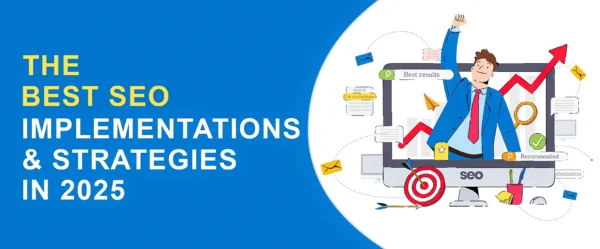In today’s digital world of SEO, there are a lot of important aspects. Ones that we should be aware of that can help us become more successful when it comes to bringing our websites to the top of the search engine result pages (SERPs). SEM and SEO are important when merged together. But first let us understand what is what and delve deeper in this guide of these two website boosters.
SEM, which stands for search engine marketing, is the effort you put into the digital marketing campaign that you create to get people to know about your website. SEO, which stands for search engine optimization, is the process of adhering to the guidelines of search engines to be able to rank. At a high level, SEM and SEO both aim to increase a brand’s visibility on search engines like Google, but they do so in different ways. Understanding their relationship is critical for developing a robust online presence. In this article, we will dive into SEM and SEO.
We will explore the unique strengths of each and why the most effective digital marketing strategies tend to include a combination of both. We’ll also examine how to decide when to prioritize one over the other and how to seamlessly integrate both into a cohesive plan for optimal results. Dive deep with me in this guide to learn more and understand everything regarding both.
What is SEM (Search Engine Marketing)?
Search engine marketing (SEM) refers to paid digital marketing initiatives aimed at enhancing visibility on search engine result pages (SERPs). When we mention or talk about SEM, we focus on strategies that you create and the usage of paid advertising. Such as Google Ads. But why do we spend such an effort? Well, to reach a better traffic rate and increase it, of course. SEM is designed for immediate visibility. It is designed to help you create ads that appear at the top of search result pages for targeted keywords. These are ads that are marked as “sponsored” or simply “ad.” Why are these markings worth mentioning? Because they set them apart from organic results. Here are a few examples of SEM practices that may be beneficial for you:
- Pay-per-click (PPC) advertising: Bidding on keywords so ads appear in search results.
- Display ads: Showing ads on websites that are part of the search engine’s network.
- Remarketing campaigns: Targeting users who have previously visited your website.
Through SEM, businesses can direct traffic quickly, making it particularly useful for product launches or seasonal promotions. However, SEM can be costly over time, as advertisers must pay for each click or impression their ads receive. That is why, if you’re planning to use SEM in your SEO strategy, you have to make sure that you have the right budget planned for it before proceeding.
What is SEO (Search Engine Optimization)?
This is one topic that I have tackled one too many times on this blog. However, due to its importance, I wouldn’t mind sharing with you all I have to in order to make you understand it as well, my dear reader. Search engine optimization encompasses organic strategies that help a website rank higher in search engine results without paid advertising. This is an optimization process that involves optimizing web content, enhancing site structure, and building external links to make a site more attractive to search engines and help it climb the rankings ladder. There are two main components of SEO. The first one being on-page SEO. On-page SEO includes optimizing content, keywords, meta tags, and URL structures on your own website. While the second one is called off-page SEO. This component is about building authority through backlinks, social media, and partnerships with other sites.
The main advantage of SEO is its long-term impact. Unlike SEM, which stops producing results once the advertising budget ends, effective SEO can yield sustained traffic and visibility. While SEO is often slower to show results, it is typically more cost-effective over the long run and builds brand credibility, as users tend to trust organic search results over paid ads.
Key Differences Between SEM and SEO
Although both SEM and SEO aim to increase visibility on search engines, they do so in contrasting ways. One of the primary differences is the timeframe: SEM produces immediate results by placing paid ads at the top of search results, while SEO usually takes time to build up rankings and traffic. Another distinction is cost; SEM involves a continuous investment as you pay for each click or impression, whereas SEO often requires a one-time or ongoing investment in content and website improvements without paying for individual clicks.
An effective way to highlight these differences is to ask, “Should a business choose SEM or SEO?” This choice depends on your goals, timeline, and budget. If a business is launching a new product and needs immediate visibility, SEM could be beneficial. However, for long-term growth and sustained traffic, SEO is often the better choice. With a clear understanding of these differences, businesses can allocate their resources effectively to achieve both short-term and long-term goals.
How SEM and SEO Work Together? Learn the Process
SEM and SEO are often most effective when used together rather than separately. By combining paid and organic efforts, businesses can dominate search results and attract a broader audience. For instance, an e-commerce website might use SEM to launch a seasonal sale, boosting immediate traffic through paid ads while also employing SEO techniques to keep its website ranking high for related keywords.
One strategy is to use SEM data to enhance SEO efforts. SEM campaigns provide insights into which keywords and ads generate the most conversions. This data can then inform SEO content strategies, allowing businesses to focus on high-performing keywords in their organic content. When both approaches align, they reinforce each other and increase a brand’s visibility in multiple areas of the SERPs, leading to a higher chance of engagement and conversion from both types of traffic.
The Many Pros and Cons of SEM and SEO: Understanding it All
Each approach, SEM and SEO, brings its own advantages and limitations, making it essential to choose wisely based on specific needs. What makes SEM appealing? Primarily, it offers immediate visibility, reaching the top of search results within hours or even minutes after launching an ad. This quick traction is ideal for businesses with time-sensitive campaigns, like product launches or holiday sales, where immediate traffic is crucial. However, SEM can be costly, especially in competitive markets where bids on keywords are high. And while SEM traffic stops if the ads are paused, SEO’s impact continues over time.
SEO is considered by many something that you invest in for quite a while. It doesn’t generate instant results, as content and links need time to build authority and rank organically. However, when SEO efforts pay off, the visibility is consistent and cost-effective, often earning greater trust from users since organic results are seen as more credible. For example, a blog post optimized for keywords can keep drawing traffic without additional costs, unlike SEM ads that require continuous funding. Ultimately, the decision between SEM and SEO depends on whether the priority is immediate results (SEM) or sustainable, trusted growth over time (SEO).
When to Use SEM and When to Use SEO?
Knowing when to use SEM or SEO can make a big difference in campaign success. SEM is generally ideal for scenarios requiring fast results, like product launches, events, or time-sensitive offers. SEO, on the other hand, shines when aiming for long-term growth and establishing a solid online presence. For businesses in competitive industries, both strategies may be necessary to stay ahead, but the balance will depend on goals and resources.
If a small business wants quick leads to grow its customer base, SEM may be the go-to. However, an established brand seeking to build credibility and grow consistently over time may lean more on SEO. Thus, the decision to focus on SEM or SEO is context-driven and aligns with different stages of a business’s growth and visibility goals.
How to Combine SEM and SEO in Your Strategy
Combining SEM and SEO can yield remarkable results, as each method strengthens the other’s weaknesses. A few strategies for integration include:
- Targeting overlapping keywords: Running SEM ads on keywords you aim to rank for organically can help secure a place in both paid and organic search results.
- Testing keywords in SEM for SEO: Use high-converting SEM keywords in SEO content strategies.
- Maximizing high-performing content: When a blog post or article performs well in SEO, use SEM to promote it further, bringing it to a larger audience.
By aligning SEM and SEO efforts, brands can build a more holistic approach to search marketing. For instance, while SEO works on establishing authority, SEM can focus on delivering quick traffic to keep conversions high throughout different stages of the campaign.
In Conclusion
As search engine algorithms evolve, the boundaries between SEM and SEO may become increasingly blurred. Search engines are focusing more on user experience, content relevance, and authority, meaning SEO and SEM must work in unison to satisfy these requirements. Additionally, as paid ads become more sophisticated, SEO techniques will have to adapt to complement these trends. Businesses that prioritize both will be in the best position to thrive in the digital space.
The relationship between SEM and SEO will continue to grow closer as new tools and insights emerge, creating an intertwined approach to search engine marketing that leverages both immediate results and sustainable growth. For any brand aiming to maximize its visibility, understanding how to utilize and balance both SEM and SEO remains essential.
If you wish to delve deeper in the world of SEO and it’s benefits, you can head to linkexchange.ai and help yourself with discovering what we have to offer your website, from beneficial and SEO-enhancing services to a very informative blog that explores each and every aspect and trend of nowadays’ SEO. Check it out now and elevate your SEO game with our reputable domain.











